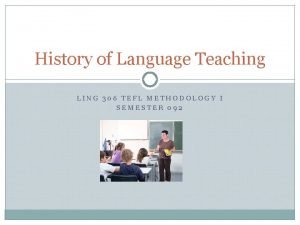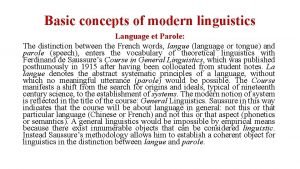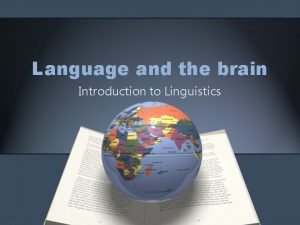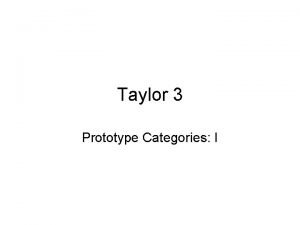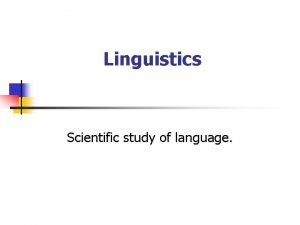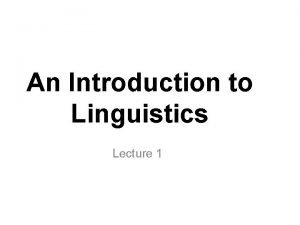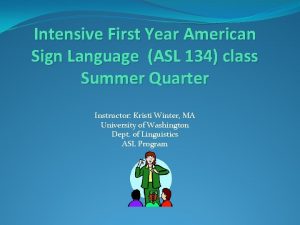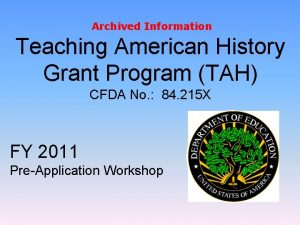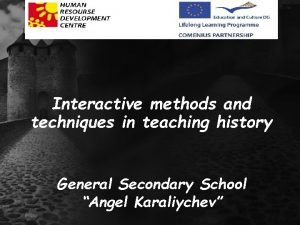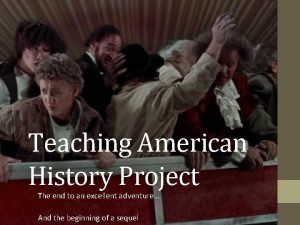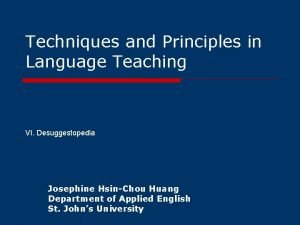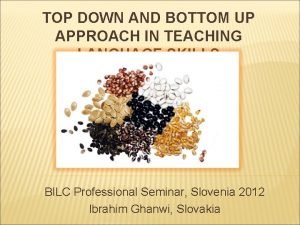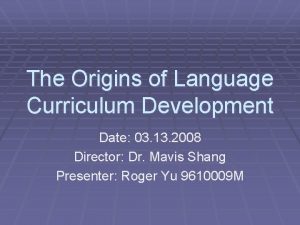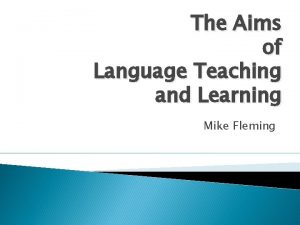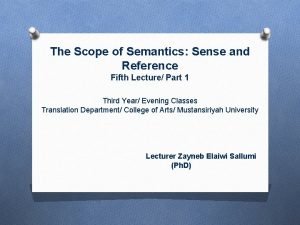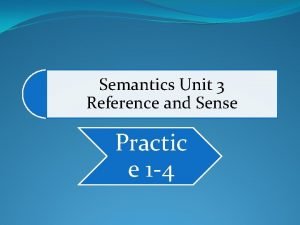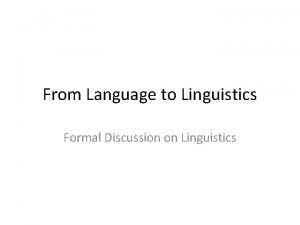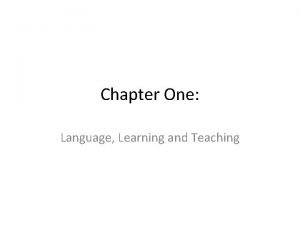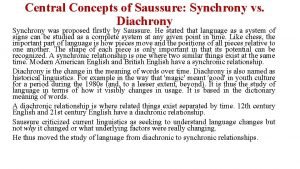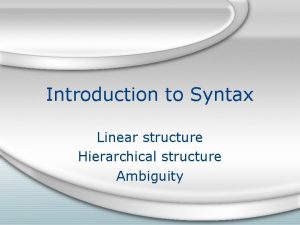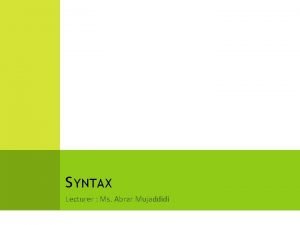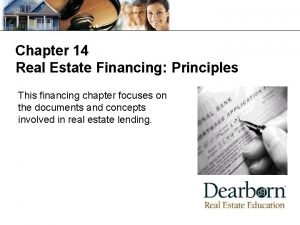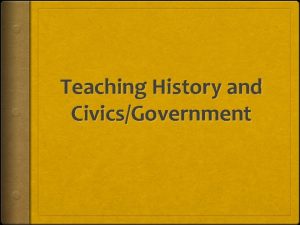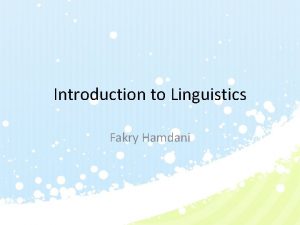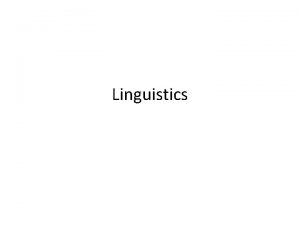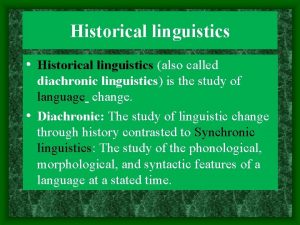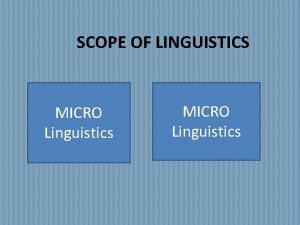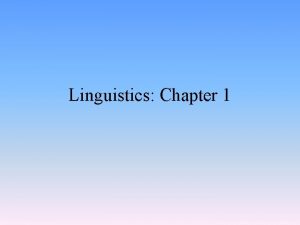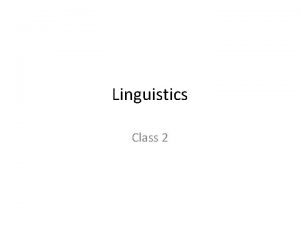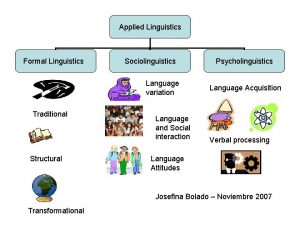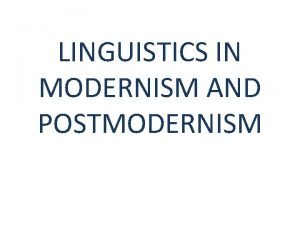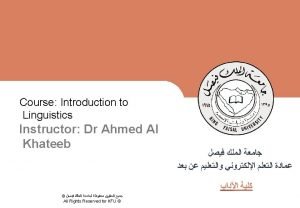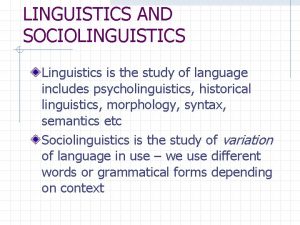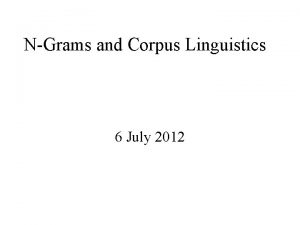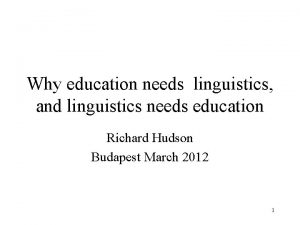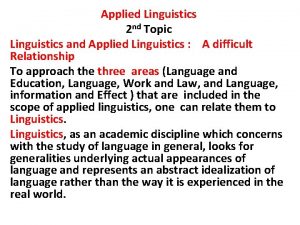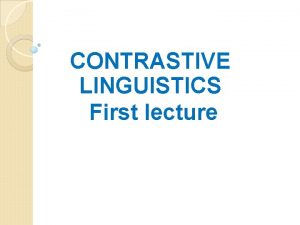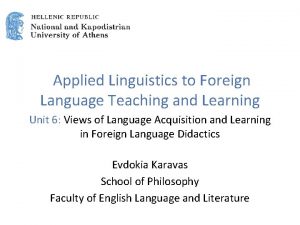LINGUISTICS Language Theory and Language Teaching History of





































- Slides: 37

LINGUISTICS

Language Theory and Language Teaching

History of English Language Indo-European Family of Language

INDIAN RIG-VEDA (1 OO HYMNS 1500 BC) VEDIC SANSKRIT BRAHMANAS Dogmatic Commentaries ARANYAKAS Meditation UPANISHADS Philosophical Speculations SUTRAS Rules concerning aspects of life

INDIAN VEDIC SANSKRIT PANINI (4 TH CENTURY B. C. ) MAHABHARATA CLASSICAL SANSKRIT RAMAYANA PRAKRITS PALI

IRANIAN EASTERN WESTERN AVESTAN OLD PERSIAN Records of Achievement of Darius and Xerxes AVESTA Sacred Book of Zoroasterism MODERN PERSIAN SHAHNAMAH Persian Epic

ARMANIAN THRACE THRACO-PHRYGIANS ASIA MINOR TROJANS CAUCASUS MOUNTAIN MACEDONIANS

HELLENIC PERICLES (495 -429 BC) DRAMATISTS AESCHYLUS EURIPIDES SOPHOCLES HELLENIC ATTIC

ITALIC LATIN ROMANIC LANGAUGES FRENCH SPANISH ITALIAN SPAIN GAUL BRITAIN

BALTOSLAVIC BALTIC PRUSSIAN - GERMAN LETTIC –LATVIA LITHUANIAN-- LITHUANIA BALTO-SLAVIC EAST SLAVIC – RUSSIAN WEST SLAVIC—POLAND SOUTH SLAVIC— HUNGARY AND ROMANIA

CELTIC WELSH = WALES CORNISH = CORNWELL BRETON = ENGLISH

4 MACRO SKILLS • LISTENING • SPEAKING • READING • WRITING

4 COMMUNICATIVE COMPETENCIES • • GRAMMATICAL DISCOURSE SOCIOCULTURAL/SOCIOLINGUISTIC STRATEGIC

4 CUEING SYSTEMS • • PHONOLOGY MORPHOLOGY SEMANTICS SYNTAX

4 COMMUNICATIVE COMPETENCIES • If a student shows skill in pronouncing the vowel sounds correctly • If a student utters “bookish” because he doesn’t know how to pertain to a person who is only good at theory but not in practice • If a student can monitor his words and his actions based on the norms of a particular place • If a student can use the language beyond sentential level

4 CUEING SYSTEMS • If a student can verbalize written symbols • If a student can list the synonyms of a given word • If a student can provide proper affixation • If a student can analyze the structure of a particular language

PHONOLOGY • The Parts of the Speech Mechanism • The Sounds of English – Voicing – Manner of Articulation – Point of Articulation


VOICING MANNER POINT • • • S TS NG M W DZ K B P F 11. SH 12. ZH 13. G 14. T 15. D 16. N 17. L 18. R 19. Z 20. V

MORPHOLOGY MORPHEME FREE MAJOR BOUND MINOR INFLECTIONAL DERIVATIONAL

MORPHOLOGY BOUND OR FREE • TEACH • UN • JUMP • MIS • WRITE • EN • BI • TYPE INFLECTIONAL OR DERIVATIONAL • JUMPER • WRITTEN • TAKEN • COUNTER • WALKED • WALKER

SEMANTICS • SYNONYMY • ANTONYMY • HYPONYMY – Homophone – Homographic Homophone

HOMOGRAPH, HOMOPHONE, OR HOMOGRAPHIC HOMOPHONE • Bear (the animal) and bear (to carry) • Wind (moving air) and wind (to mend) • Stares (to look) and stairs (ladder) • Back (body part) and back (return) 5. Lead (to be in a forefront) and lead (element) 6. Read (present) and read (past) 7. Bare (nude) and bear (animal)

SYNTAX PHRASE, CLAUSE, SENTENCE Run! The man is The man inside the very big house on the street

PHRASE STRUCTURE RULES • The very pretty nurse inside the very big house is writing a very short note on a white sheet. • The very pretty nurse inside the very big house on the narrow street has written a very short note on a white sheet. • The very pretty nurse writes a very substantial report. • Run!

SENTENCE • MOODS – Declarative (Indicative) – Interrogative – Imperative – Exclamatory* – Subjunctive*

Zero Conditional • This refers to a conditional sentence that states a simple implication. The dependent and the main clause are in the present tense because this type of conditional expresses a universally accepted fact. -If the soil is soft, Ezinma and Obiageli don’t need to dig hard for cassava.

First Conditional • This type of conditional sentence expresses a situation that concerns a hypothetical but possible future event. The dependent clause is in the present tense while the main clause is in the future tense. -If Okonkwo returns home, he will receive a hero’s welcome.

Second Conditional • This conditional sentence expresses a hypothetical situation that is unlikely to happen. The dependent clause is in the simple past tense while the main clause is in the conditional mood (would + base form of the verb). -If Okonkwo were to decide on the undertakings of the feast, he would want it to be more extravagant.

Third Conditional • This conditional sentence connotes a situation that is impossible to happen because it already transpired in the past. The dependent clause must be in the past perfect tense, and the main clause must be in the conditional perfect mood (would + have + past participial form of the verb). • If Ezinma had planted more cassava during spring, she would have harvested more for the feast.

SENTENCE • Theme and Rheme • The Cub Scouts held the carwash despite the rain. • The carwash was held by the Cub scouts despite the rain. • Despite the rain, the Cub Scouts held the carwash • Voice (Active or Passive)

LANGUAGE TEACHING

• Classical Greek and Medieval Latin – Teaching people to use foreign languages • Direct approaches to convey from and meaning • Aural and Oral Techniques • Renaissance – Printing Press – Johan Amos Comenius (1631) • • • Use of imitation Repetition Limited vocabulary Practice reading and speaking 1860’s KARL PLOETZ (Grammar Translation) 1880 FRANCOIS GOUIN (Direct Method) 1886 PASSY, SWEET, VIETOR (IPA) 1941 MICHAEL WEST (Reading Approach) 1945 Audiolingual (USA) OSA (UK)

TYPES OF GRAMMAR • Descriptive- describes grammatical constructions used in a language • Pedagogical- specifically designed for teaching a foreign language • Prescriptive-governs socially correct use of language • Reference-most comprehensive and used as reference • Theoretical-determine what constructs are needed to do grammatical analysis • Traditional Grammar

LANGUAGE TEACHING • Competence-Based Language Teaching (CBLT) • Notional-Functional Syllabi • Content-Based Syllabi • Task-Based Syllabi

• APPROACH • METHOD • TECHNIQUE

REFERENCES • The Cambridge Encyclopedia of Language by David Crystal • Teaching English as a Second or Foreign Language by Marian Celce-Murcia • The Grammar Book by Diane Larsen-Freeman and Marian Celce-Murcia • The History of the English Langauge by Albert C. Baugh
 Traditional linguistics and modern linguistics
Traditional linguistics and modern linguistics History of applied linguistics
History of applied linguistics History of language teaching methodology
History of language teaching methodology Meaning of micro teaching
Meaning of micro teaching La langue and la parole
La langue and la parole Language and the brain in linguistics
Language and the brain in linguistics Prototype theory linguistics
Prototype theory linguistics The scientific study of language
The scientific study of language Language definition in linguistics
Language definition in linguistics Signing naturally 2.9 minidialogue 3
Signing naturally 2.9 minidialogue 3 Teaching american history grant
Teaching american history grant Techniques of teaching history
Techniques of teaching history Teaching american history project
Teaching american history project Techniques and principles in language teaching
Techniques and principles in language teaching Top down approach writing
Top down approach writing Selection and gradation in language teaching
Selection and gradation in language teaching Aims and objectives of language teaching
Aims and objectives of language teaching Teaching music theory with technology
Teaching music theory with technology What is sense in semantics
What is sense in semantics Reference and sense in semantics
Reference and sense in semantics Definition of linguistics
Definition of linguistics Descriptive lexicology
Descriptive lexicology Structural linguistics and behavioral psychology
Structural linguistics and behavioral psychology Synchrony and diachrony
Synchrony and diachrony Linear order in syntax
Linear order in syntax Deep surface structure
Deep surface structure Surface structure
Surface structure Also history physical
Also history physical Theory x and theory y
Theory x and theory y Continental drift theory and plate tectonics theory
Continental drift theory and plate tectonics theory Plate tectonics vs continental drift
Plate tectonics vs continental drift Neoclassical organization theory
Neoclassical organization theory Theory x and theory y of motivation
Theory x and theory y of motivation Theory x and theory y
Theory x and theory y Plate theory chromatography
Plate theory chromatography Lien theory vs title theory
Lien theory vs title theory Y management theory
Y management theory Game theory and graph theory
Game theory and graph theory


